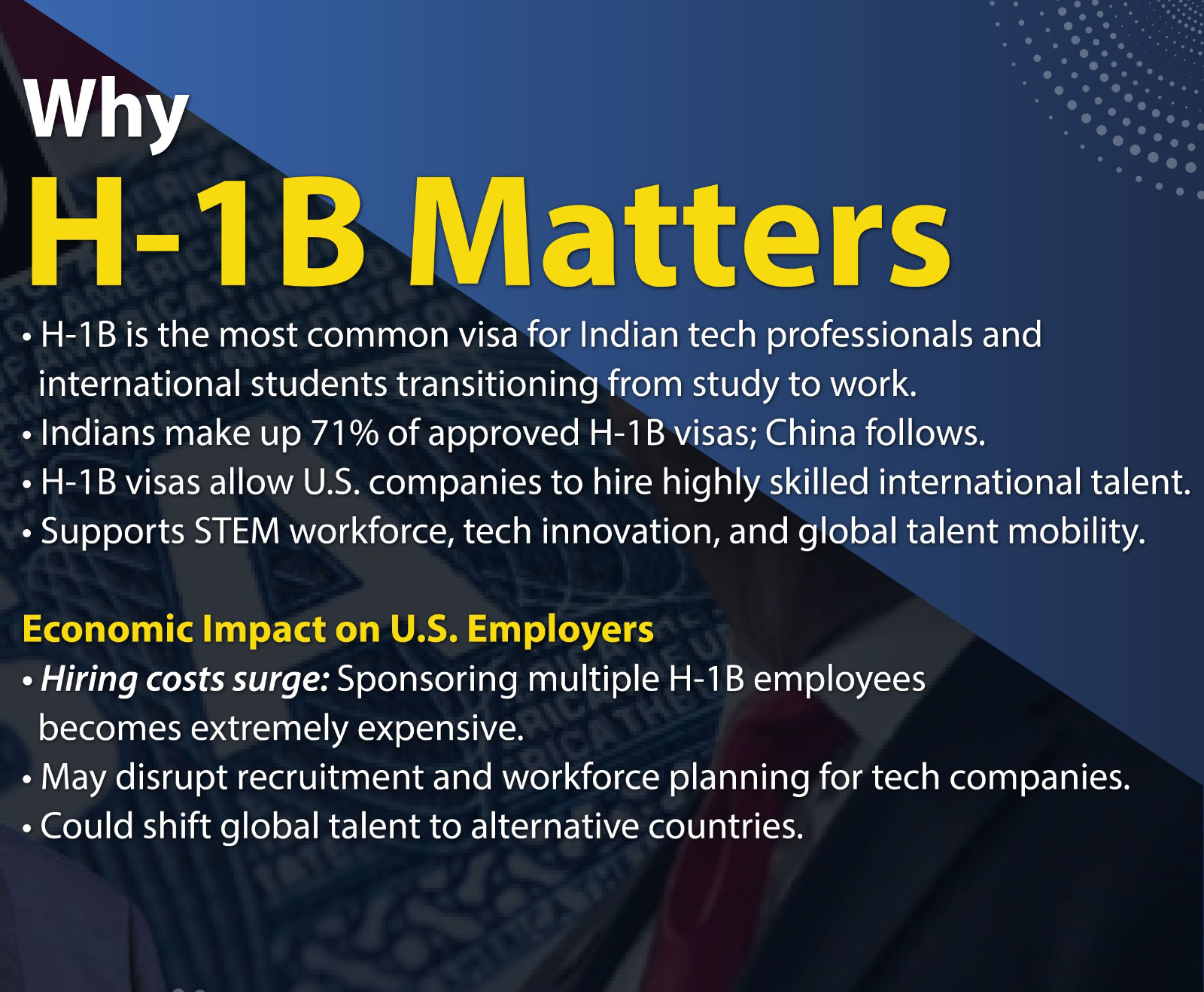Context:
Under President Donald Trump, the United States recently raised the fee for new H-1B work visas to USD 100,000 per year for employers hiring foreign skilled workers. This is a steep jump from the earlier fees (ranging from USD 2,000 to 5,000, depending on employer size etc.).
Importance of H-1B Visa Fee Hike:
Indians constitute 71% of all approved H-1B applications, with China as the next largest group.
Tech companies rely heavily on H-1B visas to hire skilled workers, and international students use it to transition from study to work in the U.S.
Impacts on the IT/tech services sector:
-
-
- Increased costs for Indian firms that deploy skilled workers to the US (on‑site projects).
- Potential disruption of business continuity, delays in projects, or firms rethinking deployment strategy.
- Reduced growth in IT export projections: some reports (e.g. Emkay) suggest India's IT export growth for FY26 may drop below 4% if the fee hike persists.
- Increased costs for Indian firms that deploy skilled workers to the US (on‑site projects).
-
About H-1B Visa:
-
- Purpose: It allows US companies to hire skilled foreign workers for jobs that require specialised knowledge (like in IT, engineering, finance, etc.).
- Eligibility: Workers must have at least a bachelor’s degree and work in a field requiring a high level of skill.
- Purpose: It allows US companies to hire skilled foreign workers for jobs that require specialised knowledge (like in IT, engineering, finance, etc.).
When and Why Was It Started?
-
- The H-1B program was launched in 1990.
- Goal: To help employers fill jobs when qualified Americans are not available, by hiring temporary foreign professionals.
- The H-1B program was launched in 1990.
Duration of the Visa:
-
- Initially valid for up to 3 years.
- Can be extended once, making a maximum of 6 years in most cases.
- Initially valid for up to 3 years.
Annual Limit (Cap):
-
- 65,000 visas issued each year under the regular quota.
- Extra 20,000 visas for applicants with a master’s degree or higher from a US university.
- 65,000 visas issued each year under the regular quota.
Why It Reflects a Larger Problem for India?
The recent hike in H-1B visa fees by the US reveals deeper structural vulnerabilities in India’s growth model.
1. Overdependence on External Factors: India heavily relies on foreign markets, especially the US, for skilled job opportunities, education, and technology. Any policy shift abroad causes domestic disruptions.
2. Weak Domestic Job Ecosystem: Limited high-end jobs and R&D opportunities at home push professionals to seek careers overseas. India lacks sufficient alternatives if such avenues shrink.
3. Export Model Risks: India’s IT sector depends on onsite deployments under H-1B visas. Higher costs now threaten profitability and competitiveness.
4. Lack of Policy Readiness: The abrupt US decision exposed India’s lack of early-warning systems, flexibility, and diplomatic safeguards.
5. Social and Strategic Implications: Beyond economics, this impacts families, remittances, and aspirations. It also challenges India’s vision of strategic autonomy under Aatmanirbhar Bharat.
Way Forward:
India must:
-
- Strengthen domestic innovation and job creation.
- Improve diplomatic engagement.
- Build resilience in exports, talent, and supply chains.
- Strengthen domestic innovation and job creation.
Conclusion:
The H-1B issue is not an isolated challenge, but a reflection of India’s deeper strategic dependencies. It underscores the urgent need to diversify opportunity structures, strengthen domestic capabilities, and build a future-ready, resilient growth model.







